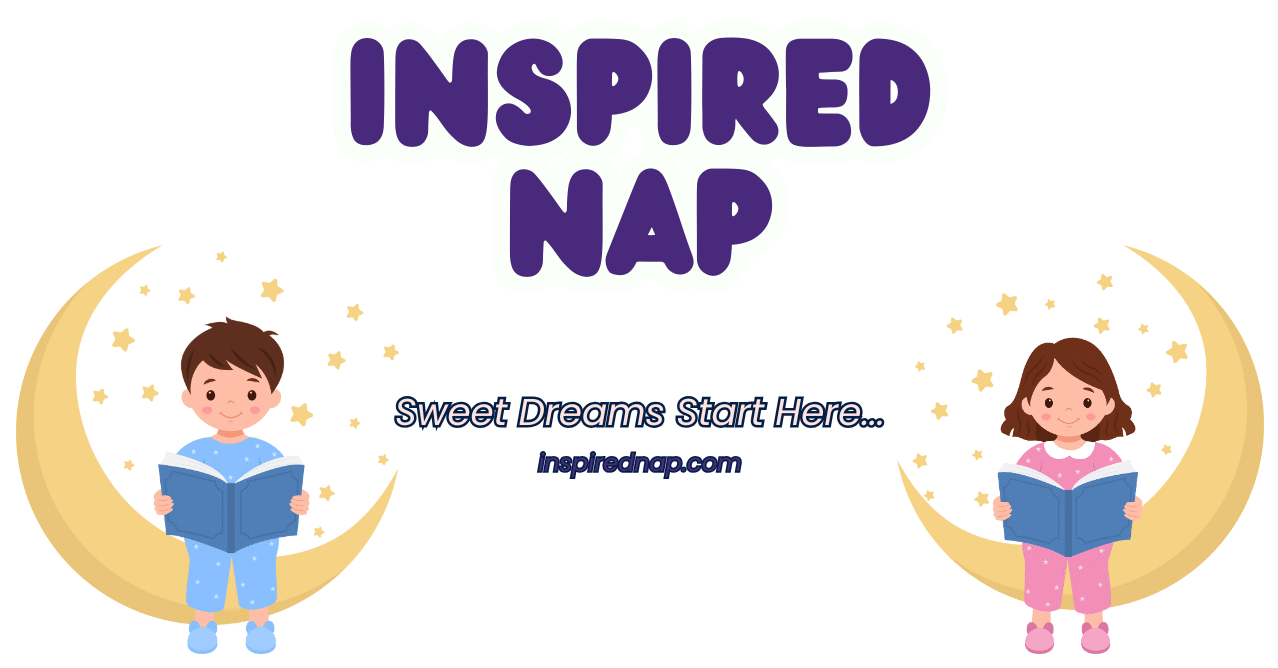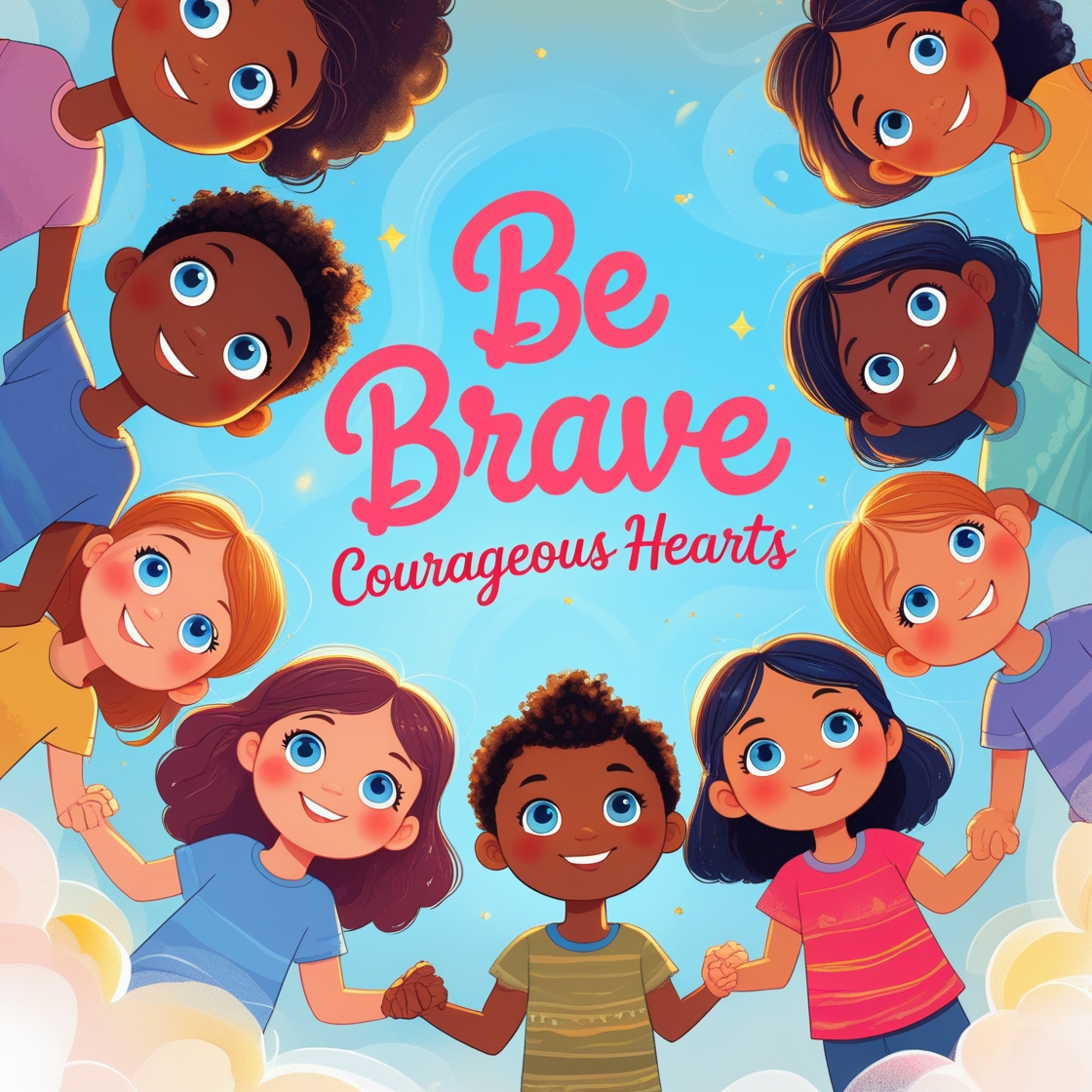Bravery and courage aren’t just about fighting dragons or saving the day in movies. It’s about doing the right thing, even when you’re scared. It could be raising your hand in class, standing up to a bully, or trying something unique. Courage helps kids grow into strong, kind, and responsible people. It builds confidence, teaches problem-solving, and shows that it’s okay to make mistakes while learning something new.
Everyday Acts of Courage
Kids show courage all the time:
- Telling the truth, even if it’s hard
- Speaking in front of the class
- Helping someone who feels left out
- Saying “no” when others want you to do something wrong
Types of Bravery
- Physical Bravery: Trying a tough sport or helping in emergencies.
- Emotional Bravery: Expressing your feelings, even when you’re sad or shy.
- Moral Bravery: Standing up for what’s right, even when others don’t.
Maya and the Missing Lunchbox
Every morning, Maya rushed out the door with her shoes half-tied, hair bouncing in the wind, and her backpack flapping open. But one thing was always missing her lunchbox.
“Did you forget something?” Mom would call from the kitchen window.
“Oh no, My lunch again.” Maya would giggle and run back inside.
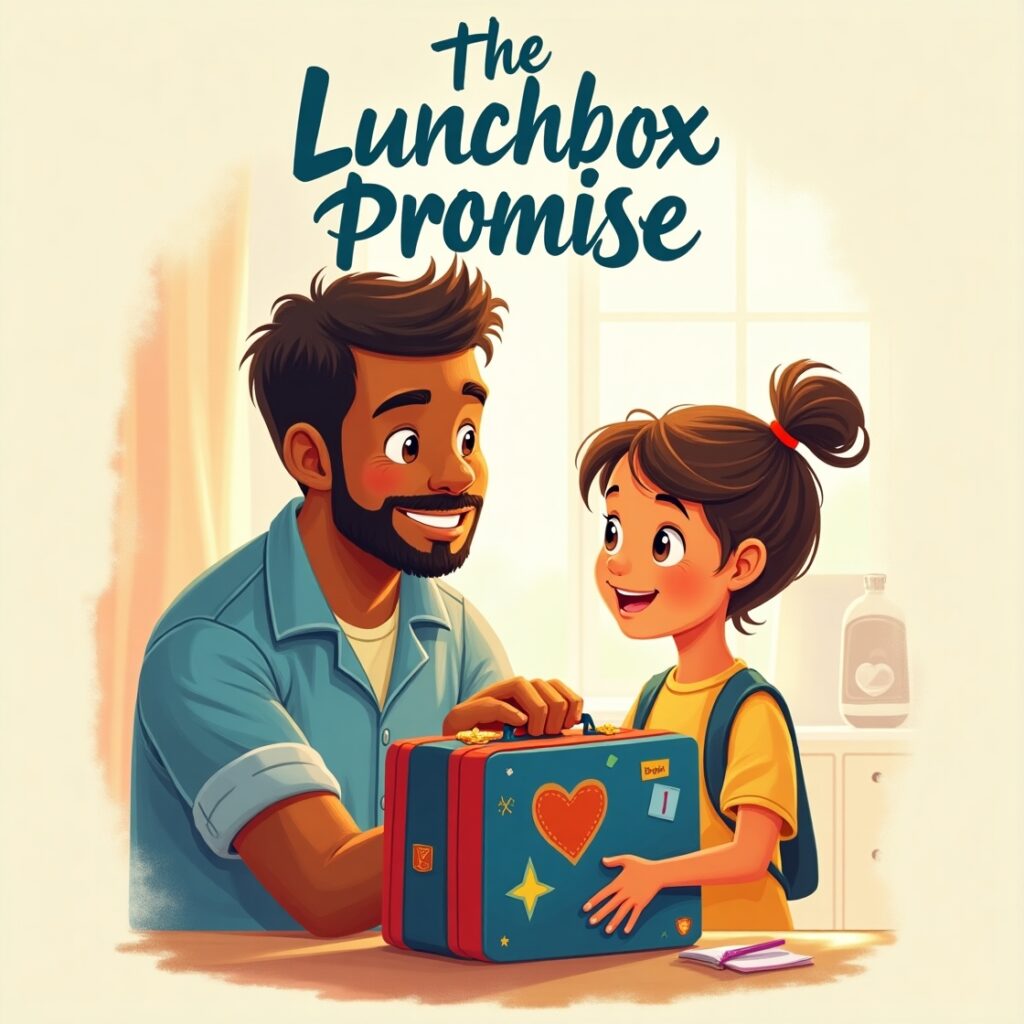
This happened so often that her teacher, Miss Lila, made a funny game out of it. “What’s missing today, Maya?” she’d ask during roll call.
One day, however, Maya looked in her cubby, in her bag, and under her desk but no lunchbox. It was gone.
“I must’ve dropped it on the way,” she whispered. Her tummy rumbled as the other kids unwrapped sandwiches and juice boxes.
That night, Maya told her parents. “I really want to remember things like a big kid,” she said sadly.
Mom handed her a notebook and said, “Let’s make a checklist.”
Maya drew pictures next to each item shoes, water bottle, lunchbox. The next morning, she checked off each picture one by one.
And guess what? The lunchbox never went missing again. Maya even helped her little brother make his own checklist.
Moral: Staying organized helps us take care of our responsibilities and feel confident.
Ben and the Pet Hamster
Ben had the coolest pet in class a chubby little hamster named Nibbles.
When Dad brought Nibbles home, Ben promised, “I’ll feed him every day and clean his cage twice a week.”
For the first few days, he did just that. But then… video games got exciting, snacks became yummier, and cleaning the cage? Well, it started to smell funny.

One morning, Nibbles didn’t squeak for breakfast. He lay curled in a corner looking tired and sad.
Ben panicked. “Is Nibbles sick?” he cried.
At the vet, the doctor said, “He’s a bit dehydrated and needs better care. Hamsters need love, too.”
Ben felt awful. That night, he cleaned Nibbles’ cage, gave him fresh food, and whispered, “I’m sorry, buddy. I’ll do better.”
From then on, Ben set reminders on his clock. He drew a “Hamster Hero” chart and proudly ticked off every time he cared for Nibbles.
Soon, Nibbles was back to zooming around, and Ben had learned something big: Love is more than hugs it’s taking care of someone every single day.
Moral: Real love means responsibility and consistent care.
The Homework Fairy
Sophie hated homework. Math looked like alien code, and reading felt like watching paint dry.
One night, she sighed, “I wish someone would just do this for me.”

Poof! A sparkly puff of smoke burst from her pencil case.
“I’m the Homework Fairy” chirped a tiny voice.
A glittery, winged creature with glasses appeared, holding a wand made of pencils.
The fairy winked. “Go play I’ve got this.”
Sophie danced around while the fairy scribbled answers. But the next day in class… oh no.
Her math answers were upside down, and her essay said, “Unicorns are made of jelly.”
The teacher frowned. “Sophie, this doesn’t look like your work.”
Sophie turned red. That night, she said to the fairy, “You’re fun, but I need to learn on my own.”
The fairy smiled, “That’s the spirit” and with a swirl of glitter, she was gone.
Sophie started doing her own homework, a little every day. It was still hard, but when she got a gold star and a proud smile from Miss Eva, it felt like magic real magic.
Moral: Doing things yourself helps you grow and feel proud.
Luna and the Library Books
Luna loved the smell of library books the papery scent, the crinkly covers, the stamp that said “Borrowed by Luna.”
One day, she checked out a book called The Secret Garden of Stars. It was her favorite. But after reading it under the covers with a flashlight… it disappeared.

She searched her room, the couch, the car, even the dog’s bed. Gone!
Instead of telling the librarian, she said nothing. She didn’t want to get in trouble.
Weeks passed. Her class had a Library Day and everyone checked out new books except Luna.
Finally, she whispered to Miss Reed, “I lost a book. I’m sorry.”
Miss Reed smiled kindly. “Thank you for being honest. Mistakes happen, but we always try to fix them.”
Together, they wrote a note and offered to help at the library. Luna made bookmarks, sorted books, and learned to respect every single one.
She even found The Secret Garden of Stars hiding behind the art shelf.
Luna became the Library Helper, and her courage inspired others to speak up too.
Moral: Honesty and taking responsibility help make things right.
Toby and the Torn Poster
Toby and Max were best friends, and Max had a giant superhero poster on his wall a rare, shiny edition of “Captain Lightning.”
One day while they played tag inside (even though they weren’t supposed to), Toby stumbled and RIPPP the poster tore right down the middle.

“Oh no…” Toby froze.
Max’s face crumpled. “That was my favorite.”
Toby could’ve blamed the wind. He could’ve said nothing. But he looked at Max and said, “I’m really, really sorry. I broke it.”
Max was upset, but he nodded. “Thanks for telling the truth.”
That night, Toby stayed up crafting a new poster with glitter, drawings, and cutouts. It wasn’t shiny like the original but it was full of heart.
When he gave it to Max the next day, Max grinned. “This is even cooler. We made it together.”
They hung it up and added new drawings every week, turning it into their “Friendship Wall.”
Moral: Owning up to mistakes and trying to make things better strengthens friendship.
Ellie and the Invisible Paintbrush
Ellie was a quiet girl who loved to draw. But she never showed her artwork to anyone not even her best friend, Sam.
“I’m not good enough,” she’d whisper to herself.
One morning, she found a strange box on her windowsill. Inside was a shiny, silver paintbrush. Tied to it was a note:
“For Ellie: Paint what you dream. Signed, The Midnight Muse.”
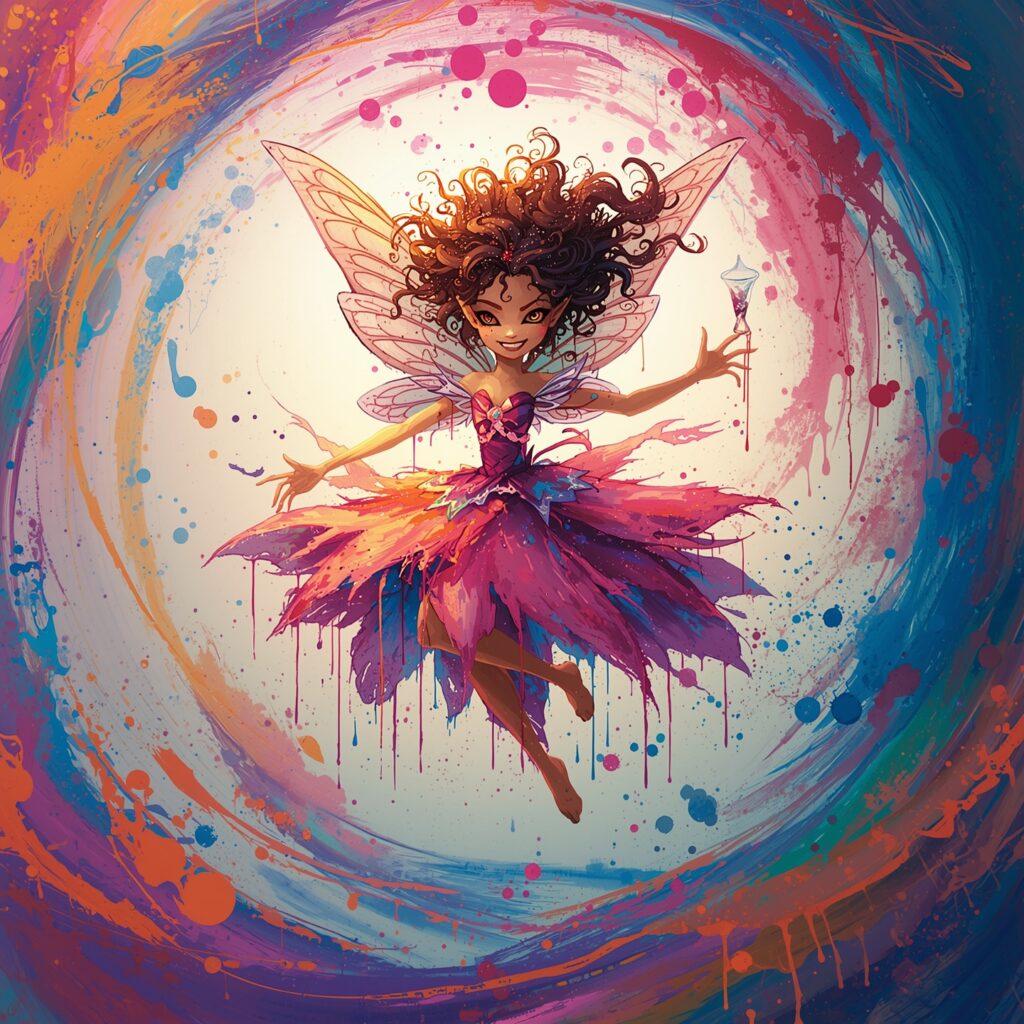
Curious, Ellie dipped the brush in water. Suddenly, colors shimmered in the air! She painted a bird—and it flew around her room. A castle right there on her wall.
She stayed up every night, creating magical scenes. But when her little brother peeked and gasped, “That’s amazing.” Ellie panicked and hid everything.
Later that week, her school announced an art show. Ellie hesitated… then bravely painted a huge mural on a giant board: a dragon soaring over a village, kids flying on balloons, and a girl just like her holding a silver brush.
On art night, everyone clapped. “You painted this?” her teacher beamed.
Ellie smiled proudly. “Yes. And I have so many more dreams to show.”
Moral: Believe in your gifts and don’t be afraid to share them.
Tommy and the Talking Tree
Tommy loved playing in the woods near his house. One day, while chasing a butterfly, he bumped into an enormous old tree.
“Watch where you’re running!” said a grumbly voice.
Tommy spun around. “Who said that?”
“I did,” said the tree, rustling its leaves. “I’m Grumblebark, guardian of this forest.”
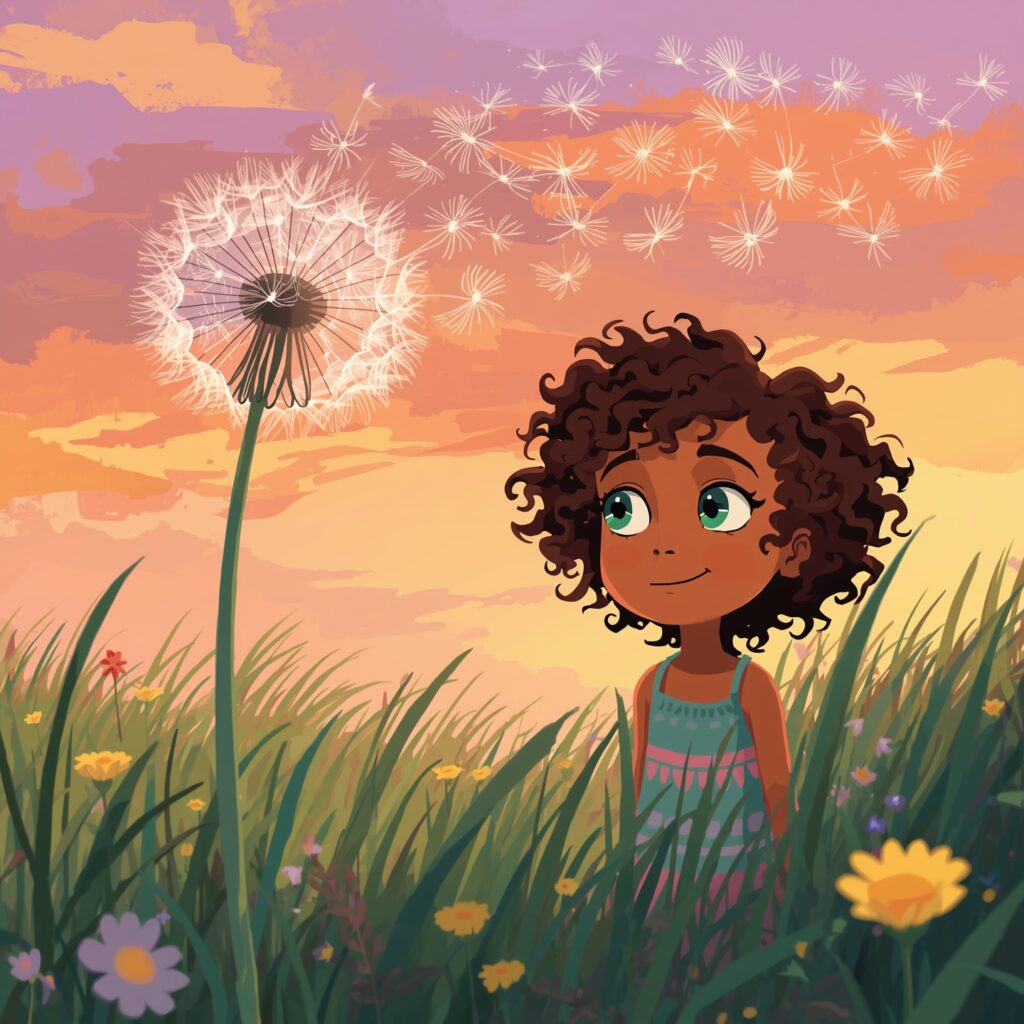
Tommy stared. “Trees can talk?”
“Only to children who listen,” the tree chuckled.
Every day after school, Tommy visited Grumblebark. They talked about the animals, the changing seasons, and how humans were leaving trash around.
One day, the tree coughed. “Too many plastic bottles at my roots. I’m getting sick.”
Tommy raced home and made signs: “Keep the Forest Clean.” He got his class to visit and help clean up. They even planted new trees.
Grumblebark grew stronger, his bark smoother, his leaves brighter.
“Thank you, young sapling,” he said.
And from then on, the forest wasn’t just a play place it was a friend Tommy promised to protect.
Moral: Nature is alive, and it needs our care and respect.
Mila and the Moonlight Market
One windy night, Mila couldn’t sleep. She tiptoed to the window and saw something odd: tiny lights dancing in her backyard.
Curious, she crept outside… and found a magical market under the moonlight.
There were stalls made of clouds, animals selling buttons, and fairies trading laughter for candy.
A sleepy owl called, “First time here, child?”
Mila nodded. “Is this real?”
“As real as dreams,” the owl winked.

Mila wandered, amazed. She bought a glowing marble that whispered stories, a balloon that sang lullabies, and a cape made of starlight.
But just as she was about to buy a jar of shooting stars, a tiny voice cried, “Help.”
A baby firefly had lost its glow and couldn’t get home.
Mila gave it her glowing marble. “Use this to light your way.”
The firefly beamed and zipped away. The owl hooted in delight. “Kindness is the best magic of all.”
When Mila woke up, the marble was gone but her heart felt bright. And every time she looked at the moon, she smiled.
Moral: True magic comes from kindness and helping others.
Ravi and the Cloud Shoes
Ravi always ran down the stairs, through the hallway, across the playground. But he was clumsy. He tripped, bumped into things, and once even landed in a cake at a birthday party.
One evening, after a big tumble, he sighed, “I wish I could fly instead of fall.”
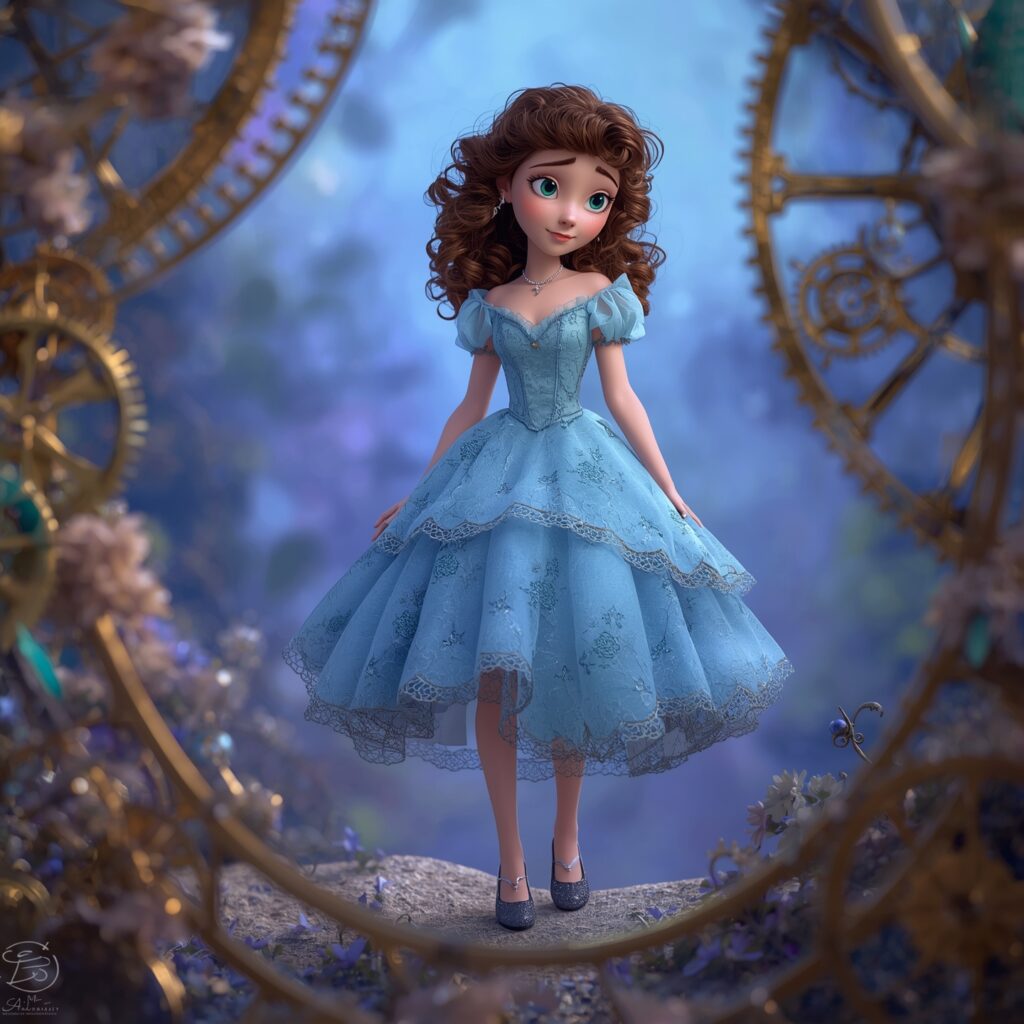
That night, a pair of shoes appeared by his bed. They were soft, glowing, and cloud-white. A tag read: “For the runner with a kind heart.”
Ravi slipped them on and suddenly, he was running on air. He zoomed over rooftops, danced on rainbows, and floated through clouds.
But when he saw a lost kitten stuck on a high tree branch, he knew just what to do. He swooped in and rescued it gently.
The next morning, the shoes were gone but he didn’t mind. He ran with confidence and balance now.
And whenever he helped someone, he felt lighter, like a cloud inside.
Moral: Sometimes, believing in yourself is all it takes to soar.
Nina and the Whispering Wind
Nina was a curious girl who asked a hundred questions a day.
“Why are clouds fluffy?”
“What do ants talk about?”
“Can wind carry secrets?”
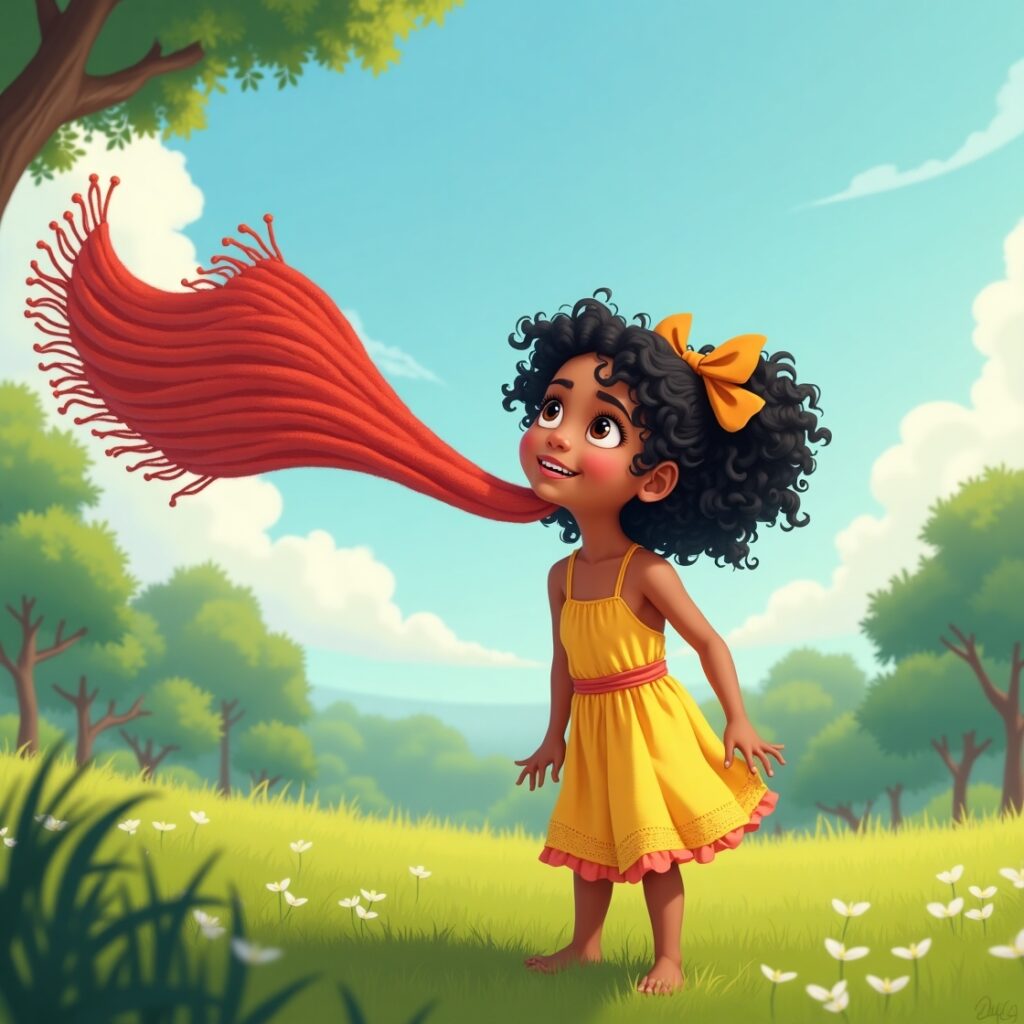
One day, while flying her kite, the wind whispered, “Follow me.”
Eyes wide, Nina ran after the breeze as it whooshed through meadows, spun through tree branches, and danced around flowers.
Finally, the wind led her to a hidden valley where everything talked.
“Hello!” sang the flowers.
“Watch your step,” grumbled a rock.
The wind said, “This is the Valley of Wonder. It appears only to children who still ask ‘Why?’”
Nina spent hours learning the secrets of bees, the jokes of birds, and the lullabies of leaves.
When she returned home, the wind whispered, “Keep wondering, Nina. That’s how magic stays alive.”
From then on, Nina never stopped asking questions and she listened to the answers in the wind.
Moral: Curiosity is the key to discovering the world’s hidden magic.
What Makes a Great Responsibility Story?
The best stories about responsibility usually include:
- A relatable main character.
- A clear problem or challenge like forgetting a chore, losing something important, or making a mess.
- A moment of realization and change.
- A satisfying ending where the character learns, grows, and earns trust.
Benefits of Responsibility Stories
Responsibility stories:
- Help kids connect emotionally to the lesson.
- Show that mistakes are okay if we fix them.
- Encourage kids to feel proud of helping and being trusted.
- Open up discussions at home or in class about what it means to be responsible.
Conclusion: Teaching Through Tales
Responsibility isn’t just something kids should be told about it’s something they can feel, live, and understand through stories. By introducing characters who grow through challenges, you help children become more thoughtful, dependable, and kind.
A story today can spark a responsible habit tomorrow.
For more bedtime stories, check our Jungle Stories Collection
Author’s Note
Namra Asim is a passionate storyteller and content creator, dedicated to writing engaging bedtime stories, magical adventures, and inspiring tales for readers of all ages. Through InspiredNap.com, She shares original stories filled with imagination, morals, and life lessons to spark creativity and bring comfort to readers around the world.
